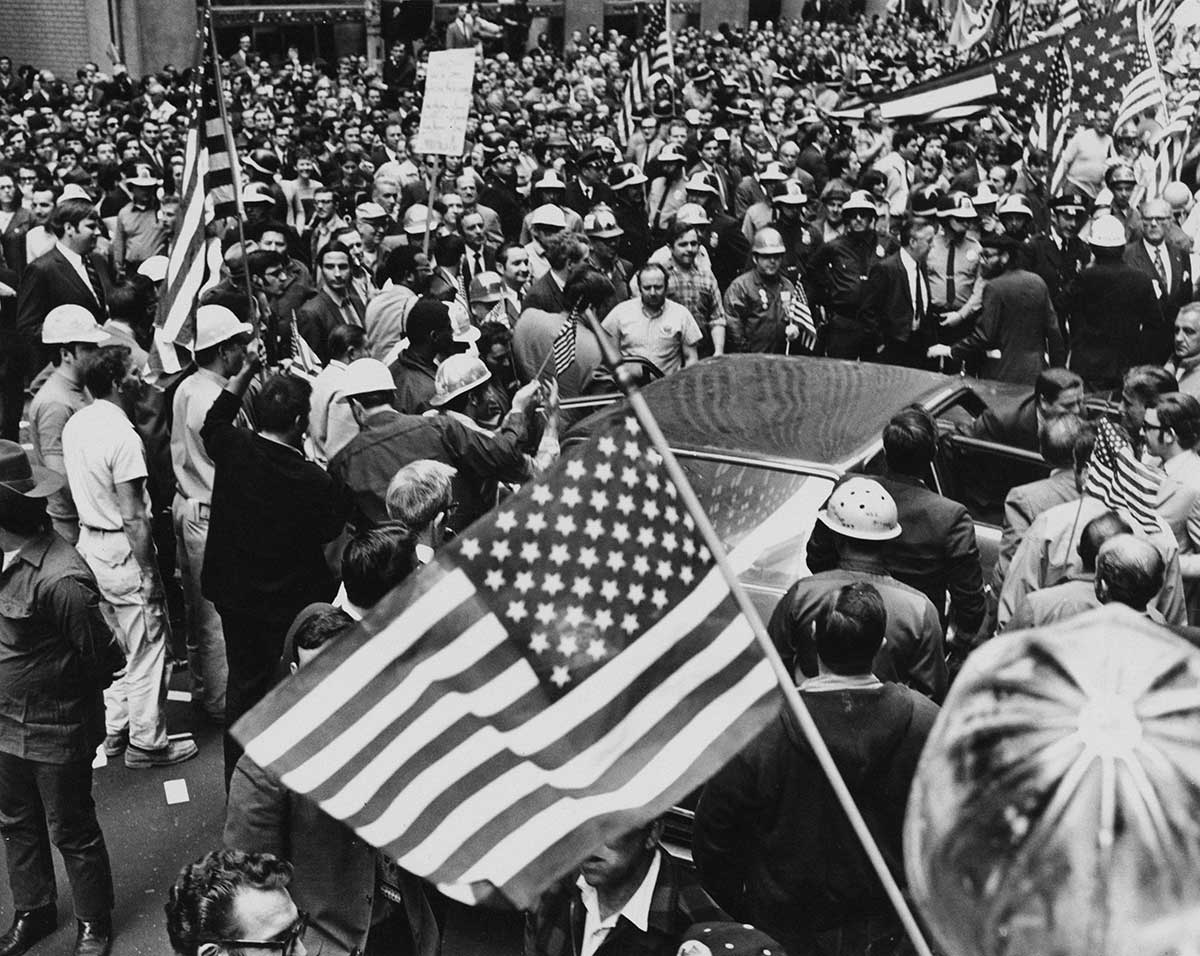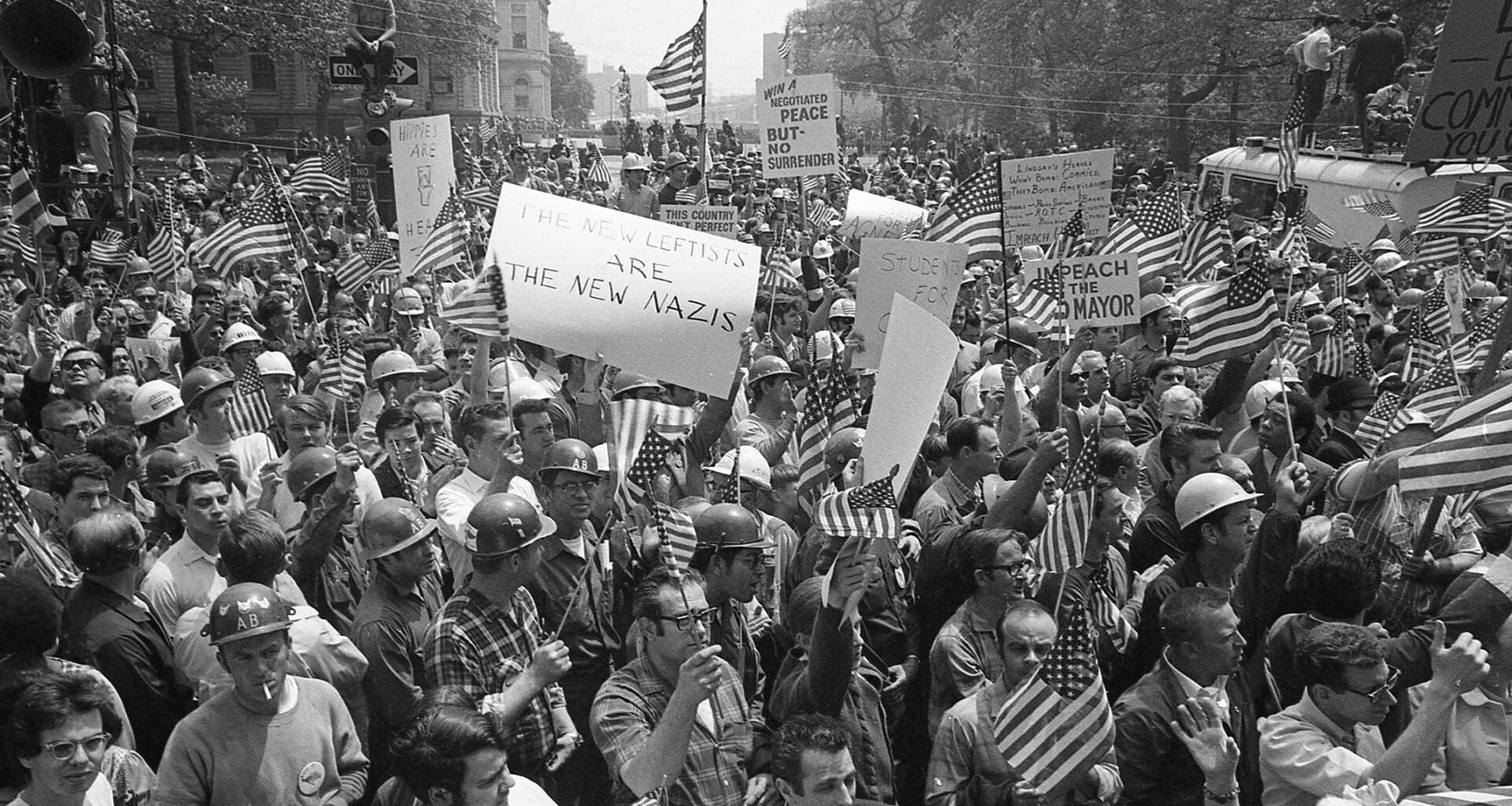Fifty-five years ago, in May 1970, a riot erupted at the corner of Wall and Broad Streets in Lower Manhattan. A few days after the killing of four students by National Guard troops at Kent State University, a large group of antiwar protesters gathered at the historic intersection. They stood on the steps of Federal Hall, next to the statue of George Washington, which commemorates the spot where the nation’s first president took his oath of office.
During the protest, a large group of construction workers, busy building the World Trade Center just a few blocks away, marched toward the antiwar crowd. The workers wore their hardhats and carried American flags. They also brought a deep well of anger and resentment toward the young demonstrators. A riot ensued, as construction workers smashed their way through the protest crowd. The flag-waving hard hats managed to take control of the steps of Federal Hall.
Finally, a reason to check your email.
Sign up for our free newsletter today.
This story is the subject of a recent, fascinating episode of the PBS documentary series American Experience. Titled Hard Hat Riot, the documentary is based on David Paul Kuhn’s excellent book of the same name.
Using archival footage, the documentary not only brings these events to a modern audience but also places them within the larger context of contemporary events in the city and nation. Rather than relying on academic talking heads, the documentary largely features those present at the riot—mostly the hardhats themselves.
Hard Hat Riot presents a remarkably fair and even positive view of those blue-collar workers, something rarely seen on public television. They come across as reasonable men with legitimate grievances. The documentary does not excuse their violence, but it helps us understand what brought about the combustible mix of Americans in Lower Manhattan that day.
The film argues that the hard hats’ anger, and the riot itself, were driven by “deindustrialization.” That has become an academic buzzword, especially when combined with the term “neoliberalism.” It’s true that blue-collar jobs, especially on the docks and in small factories, were disappearing from New York in 1970. But this had little to do with blue-collar workers’ grievances. After all, the hard hats—steamfitters, ironworkers, electricians—were all gainfully employed at the World Trade Center. Later in the decade, stagflation, oil shocks, and the city’s fiscal crisis all hurt blue-collar workers, even those in the construction trades. But this pain was still a few years away.
So why were the hard hats so angry? The proximate cause was the anti-Vietnam War protests. Many blue-collar Americans were veterans themselves. They had a healthy respect for the flag, the military, and the country’s traditions.
Too often, they thought, anti-war protesters went beyond voicing opposition to the war. Many carried North Vietnamese flags, insulted soldiers in uniform, and showed contempt for the American flag. Opposition to the war morphed into hatred for America.
The class element of antiwar protester versus hard hat was hard to miss. Most of the protesters were college students or graduates, many either upper-middle or middle class. Few would wear a military uniform and even fewer would be sent into combat.
Hard hats saw the antiwar dissidents as spoiled rich kids whose socioeconomic backgrounds shielded them from both hard work and military service. Many of the protesters saw the hard hats as uneducated and racist reactionaries. It was a volatile mix.
To make matters worse, blue-collar New Yorkers were seeing their city and their neighborhoods deteriorate. Crime was making streets and subways dangerous, graffiti had become pervasive, streets were dirtier, and parks had grown shabby.
 Photo by Leo Vals/Frederic Lewis/Archive Photos/Getty Images
Photo by Leo Vals/Frederic Lewis/Archive Photos/Getty Images
Leading this city in decline was Mayor John Lindsay, who played an indirect role in the hard hat riot. Lindsay was the first major American politician to come out against the Vietnam War, in 1965. An Upper East Sider who represented the Silk Stocking district in Congress, Lindsay had little firsthand knowledge of the lives of residents of working-class communities outside Manhattan. He seemed powerless to stop crime, and he made an enemy of the NYPD. Lindsay’s voice, prominently featured in the documentary, was grating to the ears of many blue-collar New Yorkers.
As the 1960s wore on, Lindsay fashioned a new coalition, attracting both affluent, college-educated liberals and racial minorities. Left out of the concord was the white working class, often painted as the enemy of enlightened liberalism.
In honor of the four dead students at Kent State, Lindsay had ordered the flag at City Hall lowered to half-staff. After the melee at Wall and Broad, many of the hard hats made their way to City Hall. By this time, Lindsay was nowhere to be found, and his deputy mayor ordered the flag put back to full staff to assuage the angry crowd.
This did not sit well with another young Lindsay aide, who climbed the roof of City Hall and lowered the flag again, flashing the hard hats a peace sign for good measure. He might as well have given them the middle finger. This gesture, combined with taunting from Pace University students across the street from City Hall, led to another round of rioting and fighting. The incident was symbolic of much of Lindsay’s tenure—taking a bad situation and making it worse.
Hard Hat Riot is notable for what it does not say. It does not use the word “fascism” to describe the rioters. It does not end with footage of the January 6, 2021 riot at the U.S. Capitol, and it makes no mention of Donald Trump.
Yet the hard hat riot is relevant to today as a lesson in the failures of elite liberalism. Liberal political action, even when taken with the best intentions, often falters when its supporters engage in cultural warfare that alienates ordinary Americans.
A liberalism that looks down on people it perceives as inferiors economically, socially, and culturally, will end up losing electorally. Richard Nixon’s landslide reelection win of 1972 made this clear, as did Trump’s victory more than a half century later in 2024. Such a politics will worsen political tensions and polarization.
Today, some Democrats are desperate to find ways to relate to male, working-class voters without college degrees. It’s not a new challenge. As Hard Hat Riot shows, the Democrats’ problem has been decades in the making.
Top Photo by Stuart Lutz/Gado/Getty Images
